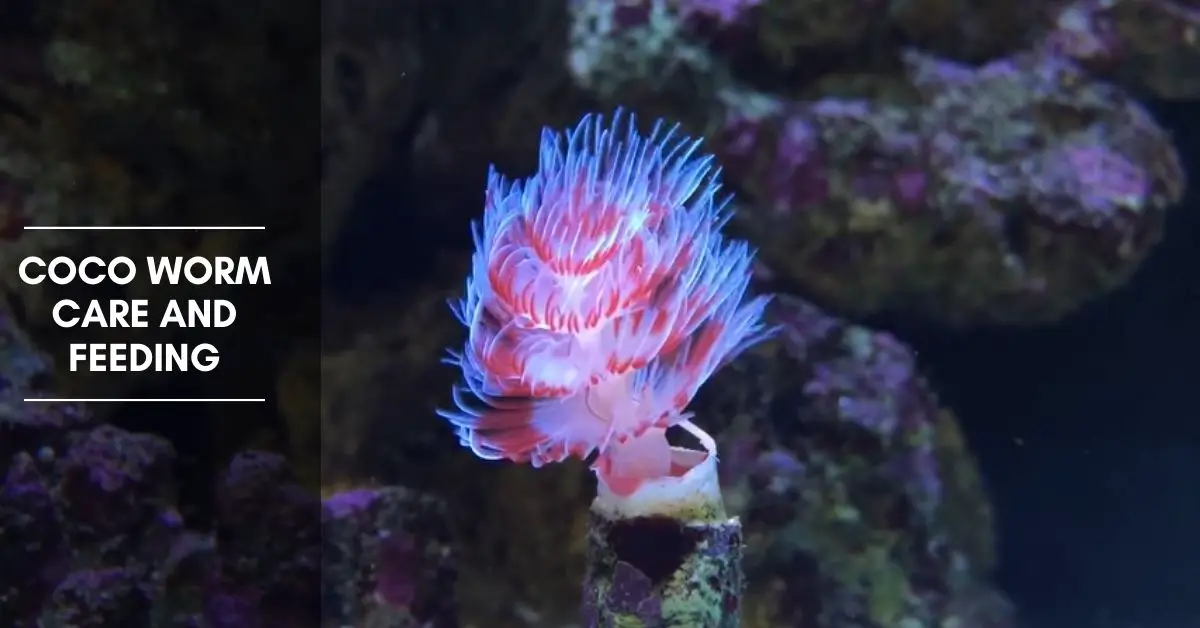Coco Worm Care
If you're looking to add some unique and colorful life to your aquarium, a coco worm might be the perfect addition. These beautiful creatures can add a pop of color and movement to your tank, but they do require a bit of special care in order to keep them healthy and thriving.
Pain Points of Coco Worm Care
Before we dive into the specifics of caring for a coco worm, let's touch on some of the common issues that can arise when caring for these creatures. Coco worms are filter feeders, which means they rely on a steady supply of plankton in order to survive. This can be a bit difficult to achieve in a home aquarium, which can lead to issues with malnourishment or even death.
What Does Coco Worm Care Consist Of?
If you're considering adding a coco worm to your tank, there are a few things you'll need to keep in mind in terms of their care. First and foremost, you'll need to make sure that your aquarium has a steady population of plankton in order to provide your coco worm with the proper nutrition. This can be achieved through careful feeding and maintenance, or you can purchase specialized food for filter feeders.
Additionally, coco worms require a partially sandy substrate in order to anchor themselves to. This can be achieved by adding a layer of sand to the bottom of your tank, and ensuring that it remains consistently moist in order to prevent it from shifting or settling.
Finally, coco worms prefer low to moderate lighting conditions, so you'll want to make sure that your aquarium's lighting is adjusted to suit their needs.
Feeding Your Coco Worm
Feeding a coco worm can be a bit of a challenge, but it's essential in order to keep them healthy and thriving. As we mentioned earlier, coco worms are filter feeders, which means they rely on a steady supply of plankton in order to survive. This can be achieved through feeding your aquarium a specialized food for filter feeders, or by using a live phytoplankton culture to provide a continuous supply of food for your coco worm.
It's important to note that coco worms are very sensitive to changes in water quality, so it's essential that you maintain a regular feeding schedule and monitor the water conditions in your aquarium to ensure that they remain stable.
Creating the Ideal Environment for Your Coco Worm
In order to ensure that your coco worm remains healthy and happy, it's important to create the right environment for them to thrive in. This means providing them with a partially sandy substrate, low to moderate lighting, and a consistent supply of planktonic food.
You'll also want to make sure that the water quality in your aquarium remains stable, as coco worms are very sensitive to changes in water chemistry. Regular water changes and careful maintenance are essential to keep your coco worm healthy and thriving.
Common Issues with Coco Worm Care
Despite your best efforts, there are a few common issues that can arise when caring for a coco worm. Some coco worms may struggle to adjust to a new aquarium environment, while others may experience issues with malnourishment or disease.
In order to prevent these issues from arising, it's important to carefully monitor your coco worm's health and behavior, and to take action at the first sign of any potential issues.
Tips for Keeping Your Coco Worm Happy and Healthy
Here are a few tips to keep in mind when caring for your coco worm:
- Provide a consistent supply of planktonic food
- Maintain a partially sandy substrate
- Monitor and adjust lighting conditions as needed
- Regularly monitor water quality and make adjustments as needed
- Watch for signs of malnourishment or disease, and take action at the first sign of any potential issues
Question and Answer
Here are a few common questions and answers related to caring for a coco worm:
Q: How often should I feed my coco worm?
A: Coco worms require a constant supply of planktonic food, so you should aim to feed them several times per day.
Q: What should I do if my coco worm appears malnourished?
A: If you notice that your coco worm appears to be malnourished or is not feeding properly, you should consider adjusting your feeding schedule or switching to a different source of planktonic food.
Q: Can I keep multiple coco worms in the same aquarium?
A: While it is possible to keep multiple coco worms in the same tank, it's important to monitor their behavior carefully to ensure that they are not competing for resources or becoming aggressive towards one another.
Q: What should I do if my coco worm appears to be unwell or diseased?
A: If you notice that your coco worm is exhibiting unusual behavior or appears to be unwell, it's important to take action immediately. This may include adjusting water chemistry or taking your coco worm to an aquatic veterinarian for treatment.
Conclusion
Caring for a coco worm can be a bit challenging, but with the right care and attention, these beautiful creatures can be a stunning addition to your aquarium. By providing them with a consistent supply of planktonic food, a partially sandy substrate, and carefully monitoring their health and behavior, you can help your coco worm thrive in their new home.
Gallery
Coco Worm Care? - Reef Central Online Community
Photo Credit by: bing.com / coco worm
Coco Worm. - YouTube

Photo Credit by: bing.com / coco worm
Coco Worm
Photo Credit by: bing.com / worm coco
Real Monstrosities: Coco Worm

Photo Credit by: bing.com / worm coco monstrosities real dupont bernard
Coco Worm Care And Feeding - The Aquarium Adviser

Photo Credit by: bing.com / worm worms protula